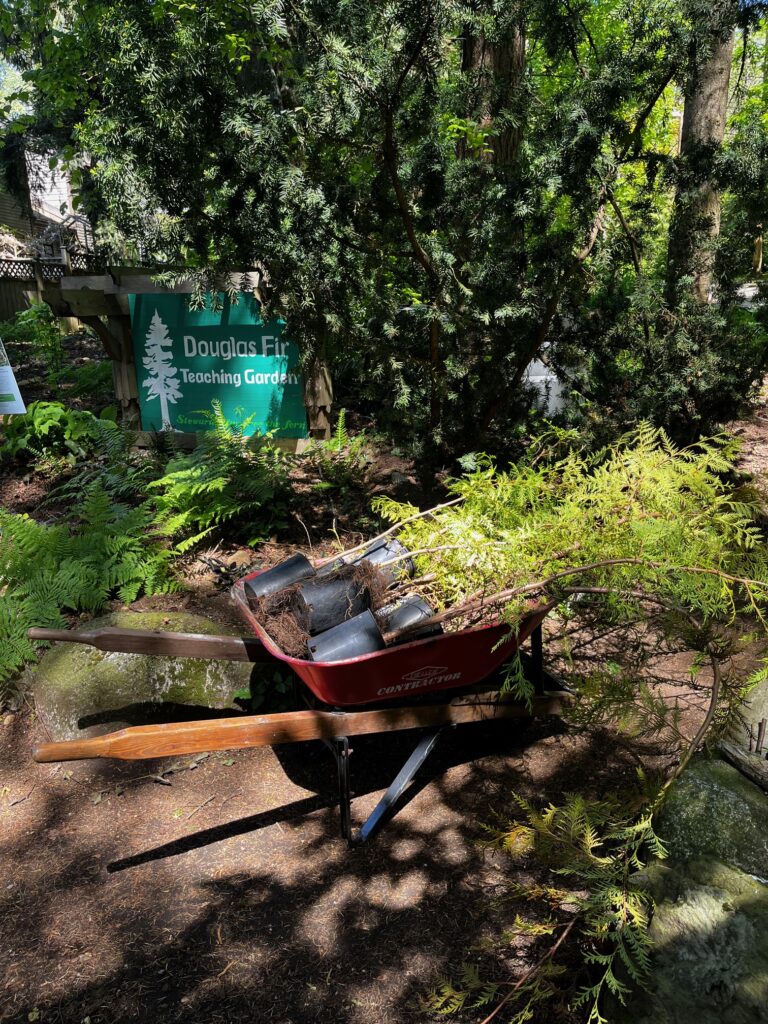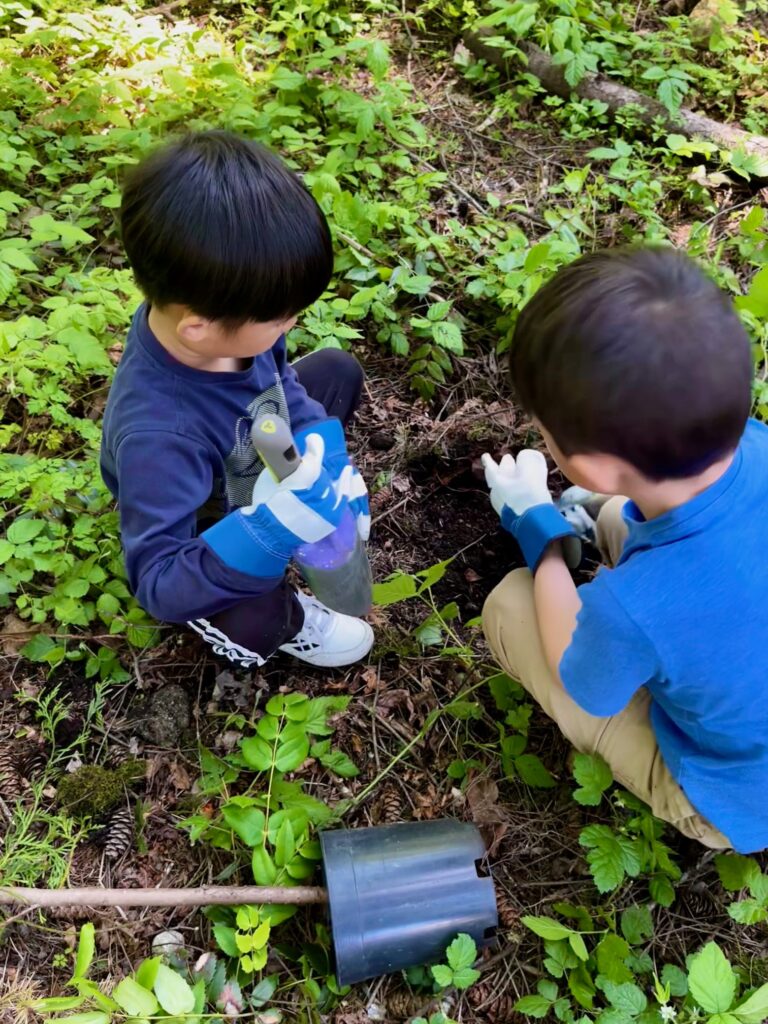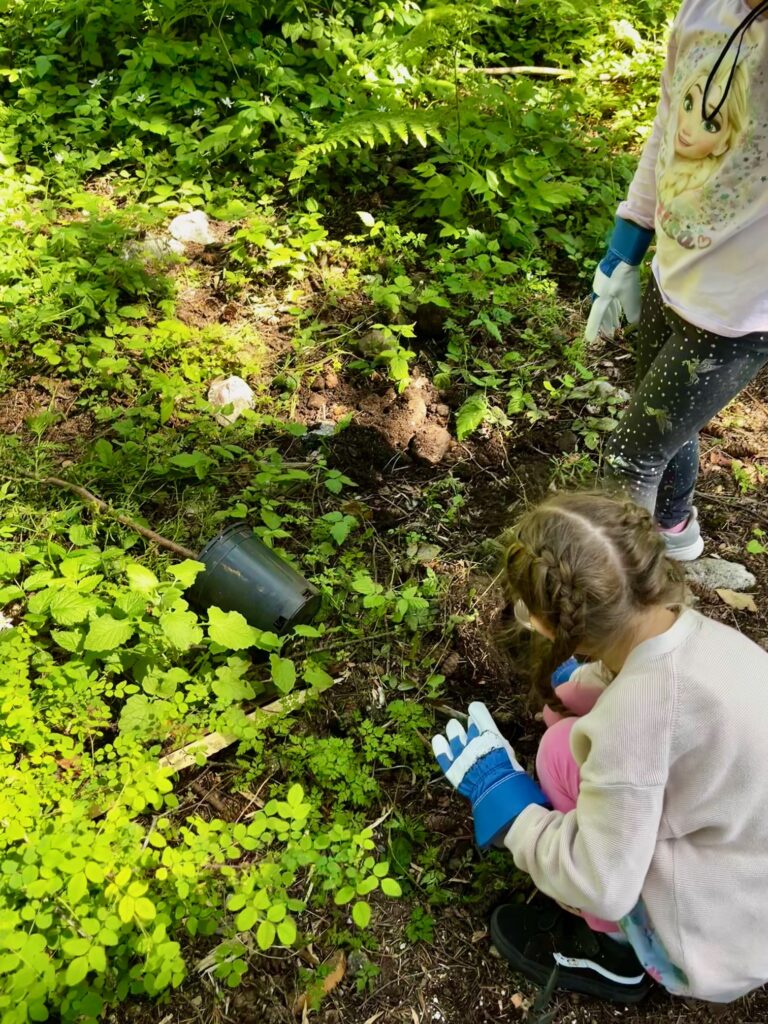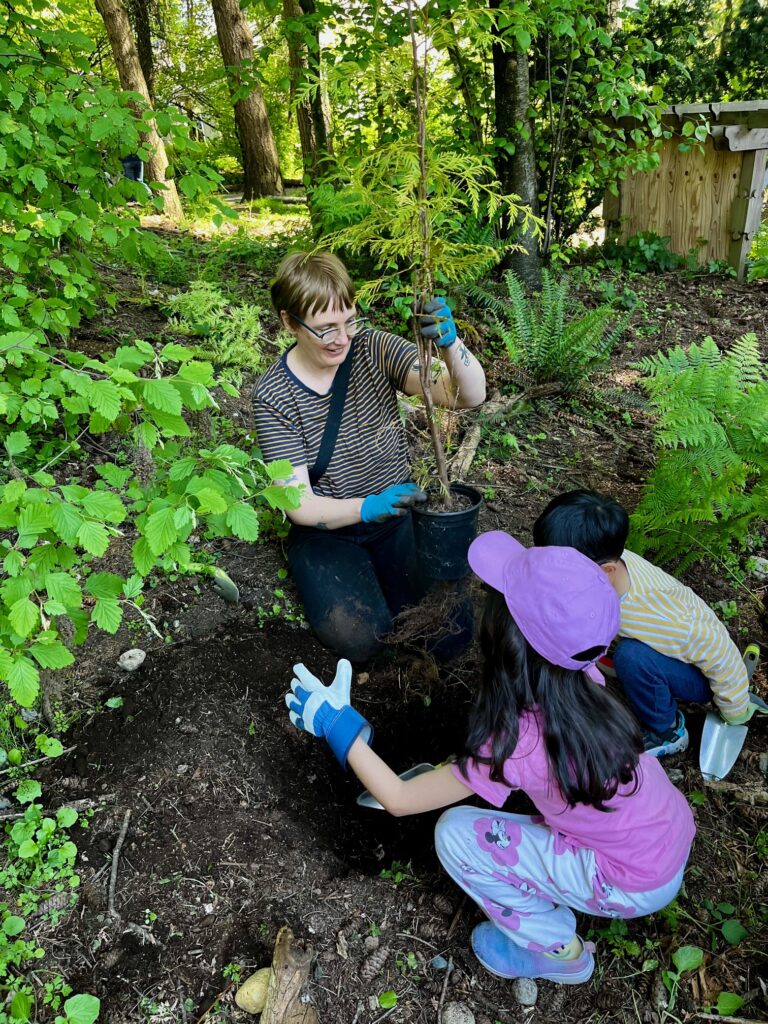Today, our Executive Director, Grace Nombrado, guided a grade 1 class from the local Champlain Heights Annex school for a fieldtrip along the Champlain Heights Trail system.
The kids were excited for the fieldtrip, as Grace had previosuly presented to their class, and they were eager to get outside and see native and invasive plants in the wild.
The first stop on the field trip was right outside their classroom door to take a look at a large thicket of invasive Himalayan blackberry. Together, the class discussed why blackberry is less desirable for the local birds, as it fruits at the end of the summer. While the native berries, such as thimbleberry, huckleberry, salmonberry etc, fruit earlier in the summer. Speaking of thimbleberry, there even was a few young thimbleberry sprouts growing for the students to check out. They passed around one of the fuzzy leaves and Grace pointed out that they are called thimbleberry because of their resemblance to a thimble (like a magician she pulled an example of a thimble from her pocket!)
Walking away from the school, the class paused briefly to check out the new green fruits growing from the Indgenous Plum/Osoberry bush. The students were told that when the fruit turns a deep dark purple it would be ripe.
Walking across the crosswalk they entered Fir Trail, a side branch of the Champlain Heights Trail system. There, at the entrance of the trail, they stepped beneath the dark branches of a large Western red cedar. Grace asked the students to “act like a cedar” with their arms. The students curved their arms down and away from themselves, noticing that the branches sweep low and then curve up and away from the tree. They noticed that many of the other cedars along the trail had their branches trimmed by the city (according to one child it was done so that “kids wouldn’t climb the trees”). We discussed how trimming the branches and exposing the cedar to heat and light stressed the tree. That, coupled with our changing climate, has led to many trees to die.
Grace stood on a cedar stump, and invited the students to look around it and notice that the death of the cedar had opened up space for new native plants to grow. The students saw salmonberry, bitter cherry, elderberry, and large leafed avens, all sprouting up around the stump.
Walking further, we saw several dead cedar snags, left standing by the city. The students were asked to share why the snags were left standing, and they shared examples of animals that could live in the tree and how woodpeckers would make homes there.
Looking down we also noticed that the death of the cedars opened space for invasivie plants to also move in to the area – such as lamium (yellow archangel) and creeping buttercup. Grace shared a rhyme to remember the name of lamium:
“Mary had a little lamium/its leaves were white as snow/everywhere that Mary went/the lamium was sure to go”
Turning right at the end of Fir Trail, the class entered the central branch of the Champlain Heights Trail sytem, Red Alder Trail. As the trails intersected they noticed native snowberry bushes give way to invasive Himalayan blackberry and finally a bed of ivy. In the distance, students saw a tree that had been fully engulfed with ivy. One student offered that the tree does not do well with ivy on it as it can’t get “sunlight and water”.
Happily, thanks to the work of Free the Fern, the studetns could see that a large area of the trail had been cleared of invasive plants. Grace invited the students to peer into the edge of the trail and see the hundreds of native plants, such as flowering fringecup, Pacific bleeding heart, and sword fern, that had been planted there.
Turning off the Red Alder Trail, the students entered the Douglas Fir Teaching Garden. This garden, first planted by Free the Fern volunteers in October 2021, was a great place for the students to see examples of ferns (sword fern, lady fern, deer fern), berries (woodland strawberry, gooseberry, huckleberry), and flowers (Pacific bleeding heart, fringecup, and baldhip rose). The students stoped at each plot in the garden to examine the plants.
Everyone was then invited to sit down within the “sacred circle”, carved by John Spence of the Squamish nation. Each seat had been carved from harvested cedars gathered farther up on Fir Trail. Students were invited to guess which animal each seat represented, including: 2 eages, a frog, a salmon, and a seal.
Grace then revealed a suprise – the students would each be invited to plant one cedar sapling in the garden! The cedar saplings had been donated to Free the Fern earlier in the week from Fresh Roots. It was just the perfect timing, as there were just enough trees for the students to each plant one.




Many students chose to work with a partner. Together, with kid-sized leather gloves and small spades, they dug and planted their saplings.
Grace then guided the class back to their school and thanked them for their curiosity and help with planting.
What a lovely afternoon of learning in nature!